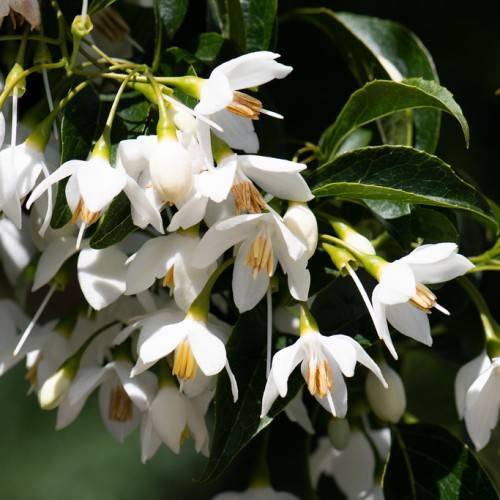
Japanese snowbell
Styrax japonicus
Also Known As - Japanese snowconeCycle:
Perennial
Watering:
Average
Hardiness Zone:
5 - 9
Flowers:
Flowers
Sun:
Full sun,part shade
Soil:
Acidic, Well-drained
Fruits:
Fruits In Summer Ready In Fall
Edible:
Yes
Leaf:
Yes
Growth Rate:
Moderate
Maintenance:
Moderate
Drought Tolerant:
Yes
Thorny:
Yes
Care Level:
Medium
watering
Japanese snowbells are an easy-care species that should be watered once a week in the spring, summer and fall months, and around once every 2 weeks in the winter. Water approximately 1 inch of water at a time, and allow the soil to dry out slightly between watering. The soil should remain slightly moist, but never soggy.
sunlight
Japanese snowbells thrive in full sun to part shade. During the summer months, they should receive at least 6 hours of sunlight a day. They also prefer slightly cooler temperatures and some early morning shade when temperatures begin to soar. In winter, they need at least 4 hours of direct light every day.
pruning
Pruning of Japanese Snowbells should typically be done twice a year: once in late winter/early spring and again in late summer/early fall. During the late winter/early spring, only dead, diseased, damaged or crossing branches should be removed, while in the late summer/early fall, heavier pruning may be done on the large branches to shape the tree. When pruning, try to maintain or create a form with a definite central stem, multiple well spaced branching, and an open center. Remove no more than 1-third of the growth in any 1 year. Doing any more than this can damage the tree or reduce flowering in future years.
